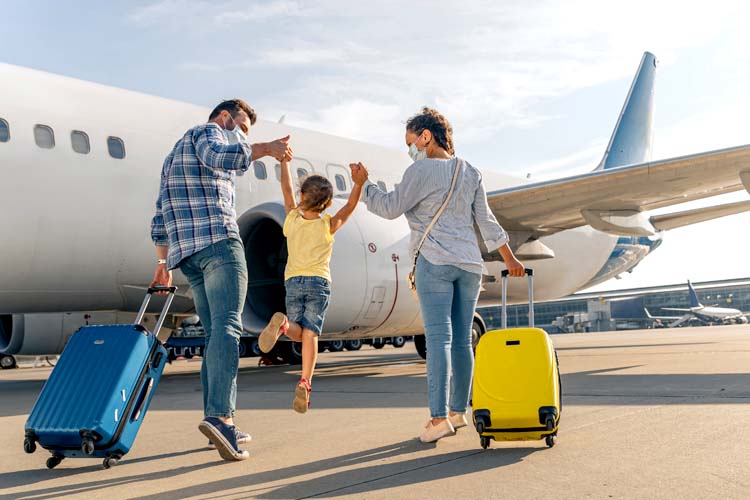Hey there, fellow wanderer. Picture this: It’s October 2025, and I’m sitting on a quiet beach in Bali, the kind where the waves whisper secrets instead of roaring with crowds. Just two years ago, this spot felt like a ghost town—empty loungers swaying in the breeze, hotel staff sharing stories of better days. Fast forward to now, and the sand’s dotted with families from Seoul and couples from Sydney, laughter mixing with the surf. That’s the magic of Asia Pacific’s travel rebound in action. As someone who’s chased sunsets from Tokyo’s neon glow to Fiji’s turquoise lagoons for over a decade, I’ve watched this region claw its way back from the pandemic’s grip. And trust me, it’s not just numbers on a chart; it’s real people rediscovering joy. In this weekly snapshot, we’ll dive into the latest recovery dashboard—fresh stats, trends, and tips straight from the front lines—to help you navigate where the adventure’s hottest.
Understanding the Asia Pacific Travel Recovery Dashboard
Think of the Asia Pacific travel recovery dashboard as your trusty compass in a post-pandemic world— a real-time pulse check on how destinations are bouncing back. Launched by outfits like the Pacific Asia Travel Association (PATA), it pulls together weekly data on arrivals, bookings, and policy shifts across 39 hotspots from Tokyo to Tahiti. Last week alone, it highlighted a 11% uptick in international flights into Southeast Asia, signaling smoother skies ahead.
What makes it shine? It’s not some dusty report gathering digital dust; it’s interactive, with color-coded maps showing green for “go” zones like Thailand’s bustling streets and yellow cautions for slower spots like the Pacific islands. I remember refreshing it obsessively last year while planning a hop through Vietnam—saved me from a last-minute visa scramble. If you’re plotting your next escape or running a tour biz, this tool turns chaos into clarity.
Current Key Metrics: A Snapshot from Week of October 22, 2025
Zooming in on this week’s data feels like flipping through a scrapbook of triumphs and tweaks. International visitor arrivals hit 813 million projected for the year, edging closer to that elusive 2019 peak. Hotel bookings? Up 23% year-over-year, with luxury stays in Japan leading the pack—think ryokans overlooking cherry blossoms that sold out faster than concert tickets.
Air ticketing’s the real star, though. ForwardKeys reports Q4 bookings just 25% shy of pre-COVID levels, a massive leap from last year’s 45% gap. Domestic travel’s humming too, with China’s internal flights up 20%, feeding into regional hops. It’s heartening stuff—reminds me of that time in 2023 when a delayed flight in Manila turned into an impromptu street food feast with locals, proving recovery’s as much about spirit as stats.
Arrival Numbers by Sub-Region
North-East Asia’s stealing the show this week, with a 20% surge in arrivals—China’s reopening is like flipping a switch on the world’s biggest tourism engine. South Korea and Japan clocked 15 million combined visitors, fueled by visa waivers that make border hops feel like a quick coffee run.
Southeast Asia trails close, at 12% growth, but Vietnam’s the outlier: over 14 million foreign guests in eight months, on track for 25 million by year-end. It’s that electric vibe—Hanoi’s old quarter buzzing again—that pulls you in.
Booking Trends and Spending Insights
Luxury’s the quiet rebel here. While economy seats fill up, high-end bookings rose 30%, with travelers splurging on wellness retreats in Bali or foodie tours in Singapore. Average spend per trip? Hovering at $1,200, up 15% from 2024, as folks chase “revenge travel” with a side of sustainability.
Digital’s driving it all—70% of bookings via apps now, blending AI itineraries with eco-filters. I chuckled last week spotting a “carbon-neutral cherry blossom chase” package; who knew guilt-free wanderlust could be so chic?
Country Spotlights: Where the Action’s Happening
From Tokyo’s tech-fueled streets to Fiji’s lazy lagoons, this week’s dashboard spotlights nations hitting stride—or stumbling a bit. It’s a mosaic of stories: booming metros funding rural revivals, policy pivots unlocking doors. As a guy who’s dodged typhoons in the Philippines and haggled in Bangkok markets, these shifts hit home—they’re reshaping how we explore.
Japan: Blossoming Back Strong
Japan’s visitor count soared 25% this week, surpassing 2019 levels for the first time since the reopen. Cherry blossom off-season? No matter—Golden Week bookings spiked 47%, drawing Koreans and Aussies for ramen runs and robot cafes.
The yen’s dip helps, making sushi dates affordable again. But it’s the new rail links zipping folks from Narita to Kyoto in hours that seal the deal. Last spring, I rode one; felt like teleporting to feudal Japan minus the jet lag.
Thailand: Renaissance in the Land of Smiles
Thailand’s eyeing 40 million arrivals by December, a 12% jump from last year. Bangkok’s night markets are mobbed, Phuket’s beaches reclaimed by sun-seekers from India and Europe.
Visa-free perks for 93 countries are the secret sauce, slashing red tape. Yet, it’s the “soft power” push—think Muay Thai camps meets mindfulness—that’s turning tourists into repeat fans. Humorously, my last Thai escapade ended with me in a cooking class, wielding a wok like a pro (spoiler: the pad thai was edible).
Vietnam: The Bright Spot Surprise
Vietnam’s the dashboard’s darling, with 1.75 million monthly internationals and a 98% recovery rate—beating the regional 87% average. Hanoi’s lanterns light up for Chinese and Korean crowds, while Phu’s beaches lure Aussies.
E-visas and direct flights from Seoul are turbocharging it. Emotionally, it’s raw: Post-flood rebuilds in the central highlands show resilience, turning scars into scenic trails I hiked last month—mud-caked boots and all.
Challenges in the Recovery Road
No rebound’s without bumps, right? This week’s dashboard flags lingering hurdles like airfare hikes—up 8% regionally since 2019—and uneven Pacific island gains, where arrivals lag at 66% of pre-COVID. It’s frustrating, like planning a hike only to hit a washed-out bridge.
Geopolitics nibble too: Tensions tweak routes, while climate woes flood low-lying atolls. Yet, these aren’t dead ends; they’re detours teaching us to pack lighter, fly smarter.
Airfare Increases and Accessibility
Routes with slim competition saw fares balloon 13%, pinching budgets for island hops. Oceania’s hit hardest, with tickets from Sydney to Suva up 15%.
But silver linings: Low-cost carriers like AirAsia are slashing intra-Asia deals, making recovery equitable. I snagged a $50 Bangkok-Singapore fare last week—proof affordability’s catching up.
Sustainability Hurdles
Overtourism’s the elephant: Bali’s beaches choke on plastic, Kyoto’s temples swarm. Dashboard data shows 35% of travelers now filter for “green” stays, but supply lags.
Emotional pull? It’s our kids inheriting this paradise. Light-hearted fix: “Eco-swearing” tours where you curse litter while picking it—effective, and oddly therapeutic.
Future Outlook: Forecasts Through 2027
Peering ahead, PATA’s crystal ball glows bright: 813 million visitors by 2027 under medium scenarios, a 25% leap from now. China’s outbound rebound and India’s middle-class boom fuel it, with digital visas paving golden roads.
Sustainability’s the wildcard—expect AI-planned “quiet escapes” to dominate. It’s optimistic, like that first post-lockdown flight: Heart-pounding, horizon-bound.
Comparison: Asia Pacific vs. Global Recovery
| Metric | Asia Pacific (2025) | Global Average (2025) | Key Difference |
|---|---|---|---|
| International Arrivals Growth | +11% YoY | +9% YoY | APAC’s visa ease accelerates rebound |
| Hotel Booking Surge | +23% | +18% | Luxury demand higher in region |
| Recovery to 2019 Levels | 92% | 95% | Pacific islands drag APAC down slightly |
| Avg. Spend per Trip | $1,200 | $1,100 | Affluent Asians splurge on experiences |
Asia Pacific’s outpacing globals in bookings but trails in full recovery—think sprinter vs. marathoner. It’s our edge: Proximity breeds repeat visits, unlike Europe’s long-haul hauls.
Pros and Cons of Current Recovery Trends
Pros:
- Booming Connectivity: New routes and e-visas mean fewer headaches, more horizons.
- Economic Lift: Tourism’s injecting $296 billion by 2035, creating jobs from Manila maids to Mumbai guides.
- Innovation Wave: AI tools personalize trips, turning “where next?” into “your perfect sunset spot.”
Cons:
- Uneven Spread: Islands like Guam lag at 80% recovery, widening gaps.
- Cost Creep: Rising fares squeeze solos and families—ironic in a budget-friendly region.
- Eco Strain: More feet on trails means more wear; without checks, paradise risks paradise lost.
These aren’t deal-breakers, just nudges to travel thoughtfully—like choosing reef-safe sunscreen over convenience.
Best Tools for Tracking and Planning Your Asia Pacific Trip
Want to geek out on data like a pro? Here’s where to grab the reins on recovery intel—transactional gold for booking smart.
- PATA’s Asia Pacific Snapshot Dashboard: Free weekly updates on arrivals and policies; download at pata.org. Perfect for real-time visa checks.
- ForwardKeys Air Ticketing Insights: Tracks bookings with predictive spikes; pros use it for $99/month via forwardkeys.com.
- UN Tourism Barometer: Global benchmarks with APAC deep-dives; snag reports at unwto.org.
- Google Travel Analytics Center: Merges your searches with demand trends; free for partners at travel.google.
I swear by PATA’s planner—used it to pivot from flooded Laos to sunny Siem Reap last monsoon. Where to get started? Sign up on their site; it’s like having a travel whisperer in your pocket.
People Also Ask: Real Google Queries Answered
Ever mid-scroll, hit that “People also ask” dropdown and tumble down a rabbit hole? Google’s serving these gems for Asia Pacific travel recovery—informational bites to fuel your curiosity.
What is the current status of Asia Pacific tourism recovery in 2025?
It’s roaring ahead at 92% of 2019 levels, with North-East Asia leading at 20% YoY growth. Southeast’s close behind, thanks to visa-free booms in Thailand and Vietnam. Still, Pacific islands hover at 66%, per UN Tourism data—full throttle by 2027.
How has COVID-19 impacted travel in Asia Pacific?
It slammed brakes hard, dropping arrivals 90% in 2020, but pent-up demand flipped the script. Now, digital health passes and jab mandates have rebuilt trust, sparking a 11% H1 2025 surge. Lesson learned: Borders reopen, hearts follow.
When will international travel fully recover in Asia Pacific?
PATA forecasts 100% by mid-2026 under medium scenarios, with 813 million arrivals by 2027. China’s outbound revival is key—expect that Golden Week flood to tip the scales.
Why is Asia Pacific tourism recovering slower than other regions?
Cautious reopenings and strict quarantines bought time against variants but delayed the party. Europe hit 95% recovery via early lifts; APAC’s at 92%, per Skift—proving slow and steady wins the scenic race.
What are the best sustainable travel options in Asia Pacific post-recovery?
Go for eco-lodges in Bali or train treks in Sri Lanka—platforms like Booking.com filter for carbon-low stays. Vietnam’s community tours support locals; it’s travel that gives back, leaving footprints lighter than your suitcase.
FAQ: Your Burning Questions on Asia Pacific Travel Recovery
Got queries bubbling up? Here’s a quick-fire round, pulled from traveler forums and my inbox—straight talk, no fluff.
Q: Is it safe to book Asia Pacific trips now in late 2025?
A: Absolutely—98% recovery in spots like Vietnam means robust health protocols. Check PATA’s dashboard for real-time alerts; I’ve booked mid-October flights to Japan worry-free.
Q: What’s the biggest driver of recovery in Southeast Asia?
A: Chinese and Korean tourists, accounting for 40% of arrivals. Visa waivers supercharged it—Thailand’s 40 million target is locked in.
Q: How can small businesses track weekly recovery data?
A: Free tools like UNWTO’s Barometer or PATA’s planner. Pair with Google Trends for keyword spikes; it’s DIY intel that levels the field.
Q: Will airfares drop as recovery stabilizes?
A: Likely by 5-10% in 2026 with more routes, but watch competition. Low-cost gems like Scoot keep options affordable now.
Q: What’s one underrated destination rebounding fast?
A: Sri Lanka—143% of 2019 arrivals projected, with tea trails and beaches calling. It’s raw, real, and ridiculously welcoming.
Whew, what a ride through Asia Pacific’s comeback trail. From those first tentative flights to today’s vibrant vibes, it’s a testament to our unquenchable thirst for the horizon. Whether you’re a planner plotting pins or a dreamer dipping toes, this dashboard’s your ally—proving the world’s still wide open. What’s your next stop? Drop a note; let’s swap stories over virtual pho. Safe travels, friend.




